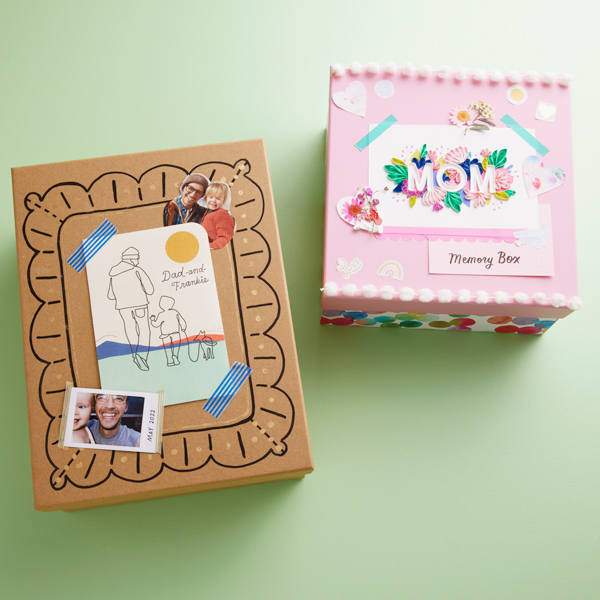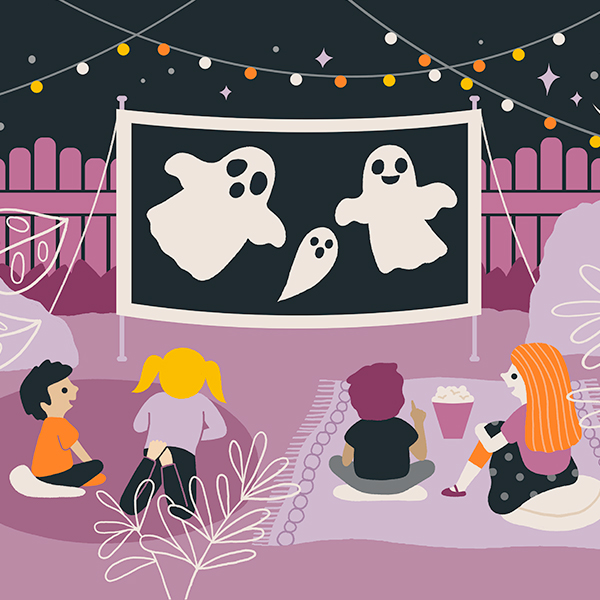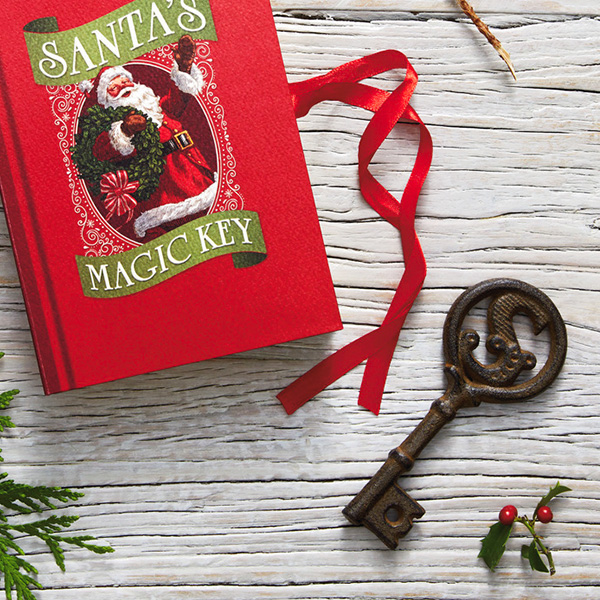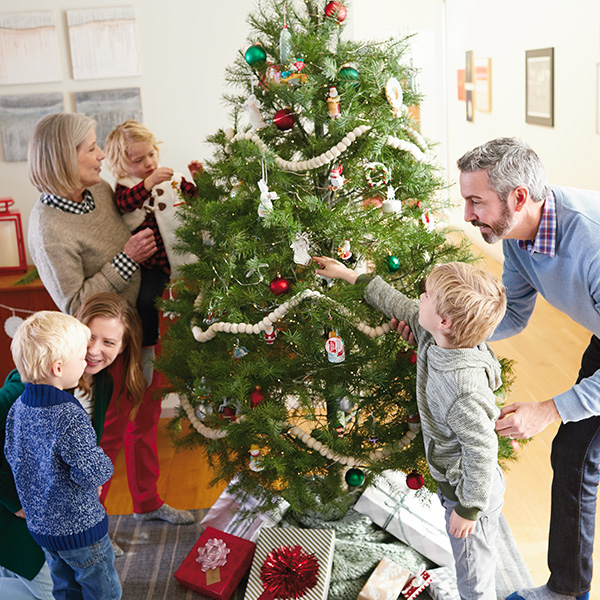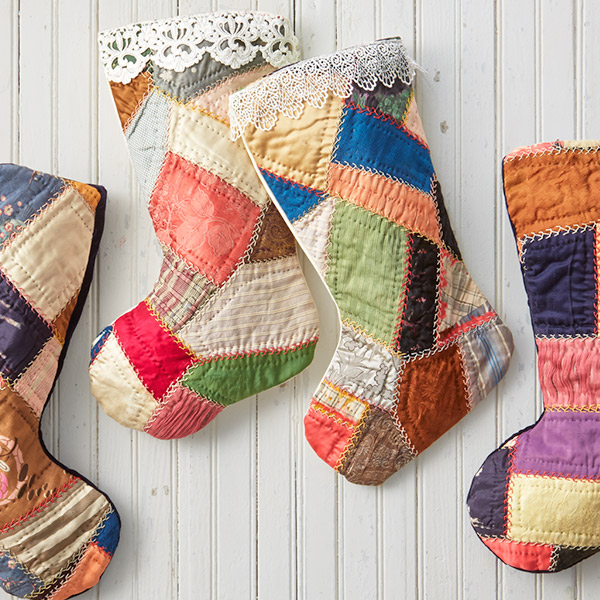Planning together: End-of-life memory-making and memory-keeping

In 2019, I lost my father to cancer. When his tumor was discovered, we were bombarded by hospitals, tests and then, ultimately, funeral plans—he was gone in three short months, and the time for connection slipped away. Looking back, I regret not focusing on end-of-life memory-making with Dad: making a conscious effort to be present with him in our final days and months together.
If you are looking for ideas to make the most of the time you have left with a loved one, whether it’s to help you show your loved one how much you care or give you physical remembrances to cherish forever, I’ve prepared this list of purposeful activities you might consider.
Inspired? Create and share by tagging @HallmarkStores.
First, a gentle reminder: These activities are not meant to be overwhelming.
Don’t feel like you must work through these on your own. This is the time to reach out to your support group—like family and friends who want to help but perhaps don’t know how.
It might be helpful to create a schedule and ask your network to “sign up” for days/times when they can stop by. Digital, shareable calendars are a great way not only to stay organized but to give others the permission they feel they need to visit or to give you a needed breather if you are the primary caregiver.
Activities for those with declining memory
Put together a meaningful, custom-made puzzle.
Is your loved one struggling to remember names and/or events? Use photos of special family moments, key life events or simple candid pics to have a personalized puzzle made just for them. It’s easy to create jigsaw puzzles using online software or websites.
As you’re putting the puzzle(s) together, talk about the person or share memories of the event. When you’ve finished the puzzle, you can glue it together and frame it to keep—add names of the people in the photo and how they’re related to your loved one that you can reference when visiting.
Start a sewing/knitting/crochet circle.
Activities that require concentration can benefit individuals with dementia. Sewing, knitting or crocheting are great activities for quality time spent one-on-one or in a group, with the added bonus of creating a keepsake together.
Go for a drive.
If your loved one is mobile and can be away from a bathroom for longer periods, taking a drive is a good change of scenery. To make it fun, get lost together. Ask your passenger whether you should go right or left—your phone navigation system can always get you back where you need to be.
I’ve had many memorable conversations in the car with my family. Sometimes hard conversations can be made easier if you don’t have to make eye contact.
Activities for those with limited mobility
Read a book.
Ask your loved one if they’d like you to read their favorite book to them. Read a chapter each time you visit. Create a reading circle with friends. Discuss the book as you progress through the story.
This could also be a great activity for children. Record your loved one reading by phone or video, or ask them to read from a Hallmark recordable story book to make a physical keepsake with their voice. We have some recordable message ideas here, if you need them.
Play a word game.
Word games can be a fun way to spend time with your loved one. Buy a crossword book you can complete together. Play a group game like Catchphrase to bring joy and maybe some healthy competition to an afternoon. Or reintroduce your loved one to Mad Libs—laughter can be great medicine.
Bring their hobby to them.
If your loved one has an activity they love, use your creativity to bring it to them. If they love fishing, look online for a fishing magnet game. If gardening is their bag, gather some pots and build an air plant assortment together. If they love creating, arrange an in-home painting activity with family and display their canvases to brighten up your loved one’s space.
Make some jewelry.
Bead kits are a popular and inexpensive way to craft at home. Print pictures for lockets or use letter beads to make necklaces or bracelets with your loved one’s name. This could be a great way to involve kids in your memory- making, too.
Bring your fur baby for a visit.
Nothing makes people happier than a pet. I bring my corgi to my grandmother’s nursing home and it’s like he’s a celebrity—everyone gathers around and wants to pet him. If the facility allows, petting an animal can be a great stress-reliever and can bring people together.
Go through photo albums/phone images together.
If your family kept photo albums or they’ve got a collection of printed photos in a shoebox or drawer, going through them with your loved one and writing names/dates on the back can bring back memories and facilitate conversations about special moments. This is also a way to gather family information that could be lost with your loved one’s passing.
Initiate a card shower.
If you’ve never heard of this, I highly recommend it. A card shower is when you reach out to friends and family with the physical address of your loved one and ask that they send messages offering love and support.
Set a timeframe so they arrive together. Receiving a handwritten message can mean a lot to someone confined to hospital or home.
Organize visits and calls with friends.
As your loved one prepares for their end-of-life, they may need help connecting with people important to them to say good-bye. Use your shared calendar to set “visiting hours” family and friends can use to schedule these visits considerately, without overwhelming your loved one with a ton of people at once.
Listen to music together.
In quiet times, listening to music or singing songs together may offer an option for relaxing. Streaming a concert they’ve never seen could also help create new memories.
Activities with children
A child approaching their own end-of-life is hard to accept, but it is a sad reality many families face. It may be difficult for adults to know how to spend time with children with a terminal illness before they pass. The activities below could be integrated with bedside visits or, conversely, be a way to include children in memory-making with their older loved ones in their end-of-life journey.
Create a collage.
Pull out some construction paper, crayons or markers and draw pictures with the child of their favorite memories. Have adults in the room do the same then create a collage that can be displayed or even framed to commemorate happy times spent with loved ones.
Play a two-player video game.
Playing the second controller in a child’s favorite video game is a fun way to connect with an experience the child enjoys.
Watch a favorite movie together.
Connecting with a child over a favorite musical, cartoon or action movie is a shared experience you can do together.
Helpful tip: This is also something you could do with an adult. In my dad’s last hour before he passed, the original Dune was playing on TV. This was one of my dad’s favorites, and I feel that having this familiar movie on that we’d watched together many times allowed my dad to relax and pass peacefully.
Activities to bring people together
Arrange a video call.
For friends and family who are far apart geographically, video calls are a way to connect easily and may be the best option for those who cannot afford to travel long distances. Share memories as a group or one-on-one. You could record the call to keep as a remembrance.
Organize an at-home spa day.
If your loved one can’t go to a spa, bring the spa to them! Organizing this is easy—pick up face masks, acrylic nail kits or gel polish. Bring curling or flat irons and blow dryers to style hair.
Or offer to give your loved one a foot and hand massage—if they are experiencing pain, this can also be a way to help alleviate soreness. Make it a group experience and watch a movie with some popcorn and candy.
Plan a potluck.
If your loved one is up for a party, this is a great way to bring people together without the added burden of caregivers needing to organize food. Ask friends and family to bring an appetizer or dish and spend time around your firepit or living room. Use this as a means for end-of-life memory- making that feels organic and casual.
Activities away from home
Go to a favorite place.
When my dad received his end-of-life diagnosis, even though he was weak and needed help walking, he really wanted to go out to eat with his close friends one last time. My uncle made this happen for him—something I am grateful for to this day.
If a park was your loved one’s favorite place, have a picnic. Go to a ballgame—if your city has a minor team, it’s often easier getting in and out of the smaller stadiums they play in. Don’t forget to take pictures on your outing. They’ll solidify the memory.
Take a walk.
Fresh air can do so much to lighten the spirit. A change of scenery can mean a lot to someone who loves activity and nature. Provide a walker or wheelchair if they need it. If your community has one, a botanical garden can be a beautiful place to walk together.
Keepsake creation and organization
In addition to intentionally creating memories with your loved one, you may also be looking for ideas to keep, catalog or otherwise organize your loved one’s ephemera. Below are a few ways to organize the stories, cards, letters, photos and keepsakes of your loved one once they have passed.
Compile memories in a book.
There are many book creation websites that can be used to create a history of your loved one. Share the website link and ask every family member or close friend to create a few pages. Memorialize a story or anecdote in writing. Add pictures from your life together. Have multiple copies printed for your family that they can keep as a remembrance of your loved one’s life.
Create an heirloom shadow box.
Rather than keeping important mementos in a box in your closet, buy a shadow box and creatively organize pictures, recipe cards, notes, cufflinks, jewelry or other items important to your loved one. Display this in a prominent place in your home or office.
Make a memory box.
While we made these with gifting in mind, a DIY memory box can also be a gift to yourself. Plus you can have fun decorating it together and selecting items to put inside that are significant to the both of you.
Digitize your home movies and photos.
There are many services online that can convert tapes, films, photos and/or audio recordings into digital mediums like CDs, DVDs, USB cards or websites.
These can sometimes be expensive, but if your family doesn’t have time to digitize, these services can help package memories of your loved one into manageable formats for you.
Personalize an ornament.
Honor the memory of a loved one with an ornament you can place on your Christmas tree every year. Placing their image in a picture frame ornament or personalizing an ornament with their name can help you include their memory in your holiday season.
As you approach end-of-life memory-making, I hope these tips help you find ways to purposefully connect with your loved one. It’s been five years now since my dad’s passing, and I cherish the peaceful moments we found in our last days together.
The time you have with your loved ones is precious—make the best of this moment, as the memories you create will be with you forever.
Looking for more ideas to make or keep memories? We have some here:
- A Christmas tribute: Meaningful ways to weave memories of lost loved ones into new holiday traditions
- Mother’s Day without Mom: Remembering lost loved ones with new traditions
- Father’s Day without Dad: Remembering lost loved ones with new traditions
- How to celebrate birthdays, holidays and special occasions when you can’t be together
- How to write an obituary: What to say about the life of a loved one
Shop Care & Concern
See allYou may also like
See more-
Valentine's Day 32 sweet Valentine’s Day ideas for family fun at home
Who do we love the most in the whole world? Our families. So we’ve pulled together all our best tips for making Va...
-
Card Ideas 16 ideas for saving your favorite cards and letters
If you’ve got a shoe box full of old cards and letters, you’re definitely not alone. People have been stashing away m...
-
Family Tips and ideas for preserving and displaying family recipes
Family recipes are a special kind of priceless heirloom—the kind that transport us back to our favorite times with ou...
-
Arts, Crafts & DIY 9 DIY memory box ideas to keep special days close at heart
Every incredible trip, amazing party and huge milestone comes with its own unique memories and little objects worth h...
-
New Year's 22+ ideas for a fun, family-friendly New Year's Eve
When I was a kid, nothing made me feel cooler than being included in grown-up stuff. On New Year’s Eve, getting to ha...
-
Father's Day Father's Day Without Dad: Remembering Lost Loved Ones with New Traditions
For many of us, “father” is synonymous with love, guidance and support. That love does not dissipate after our fat...
-
Christmas 45 ways to make Christmas magical for kids
As parents, we want to make the holidays feel magical for our children. We want to bring the season to life, giving t...
-
Halloween 25+ ideas for creating Halloween family fun at home
So many of my favorite childhood memories are of Halloween family fun: sorting and trading candy with my sister, dres...
-
Halloween Family Halloween movie night recommendations
Looking for a Fall family night activity? Round up the kids for an evening of Halloween shivers and snacks. We’ve ...
-
Christmas 25+ Things People Who Love Christmas Know
Does your heart skip a beat when you hear the first Christmas song on the radio? Does your Advent calendar start i...
-
Spring How We Celebrate: Memorial Day
Although Memorial Day weekend has become synonymous with the start of summer and backyard barbecues, the original ...
-
Christmas What is a Santa Key?
Not everyone grows up in a house with a chimney. At Christmastime, this can present a very real problem: Santa will a...
-
Christmas Holiday traditions: Why they matter, how to keep them, and when to let them go
Taking part in holiday traditions and rituals helps us feel like we’re a part of something bigger. They give us a ...
-
Anniversary Anniversary date ideas: 7 Creative memories to make together
Whether it’s your first anniversary or you’ve spent many wonderful years together, coming up with a way to celebra...
-
Christmas Memories in the making: DIY Christmas stockings
Maybe you’re blessed, like me, with many inherited quilts, but you don’t quite know what to do with them once they...
-
Family Building memories
We’ve all had that experience of a DIY project turning into something more than what we expected. When Hallm...




